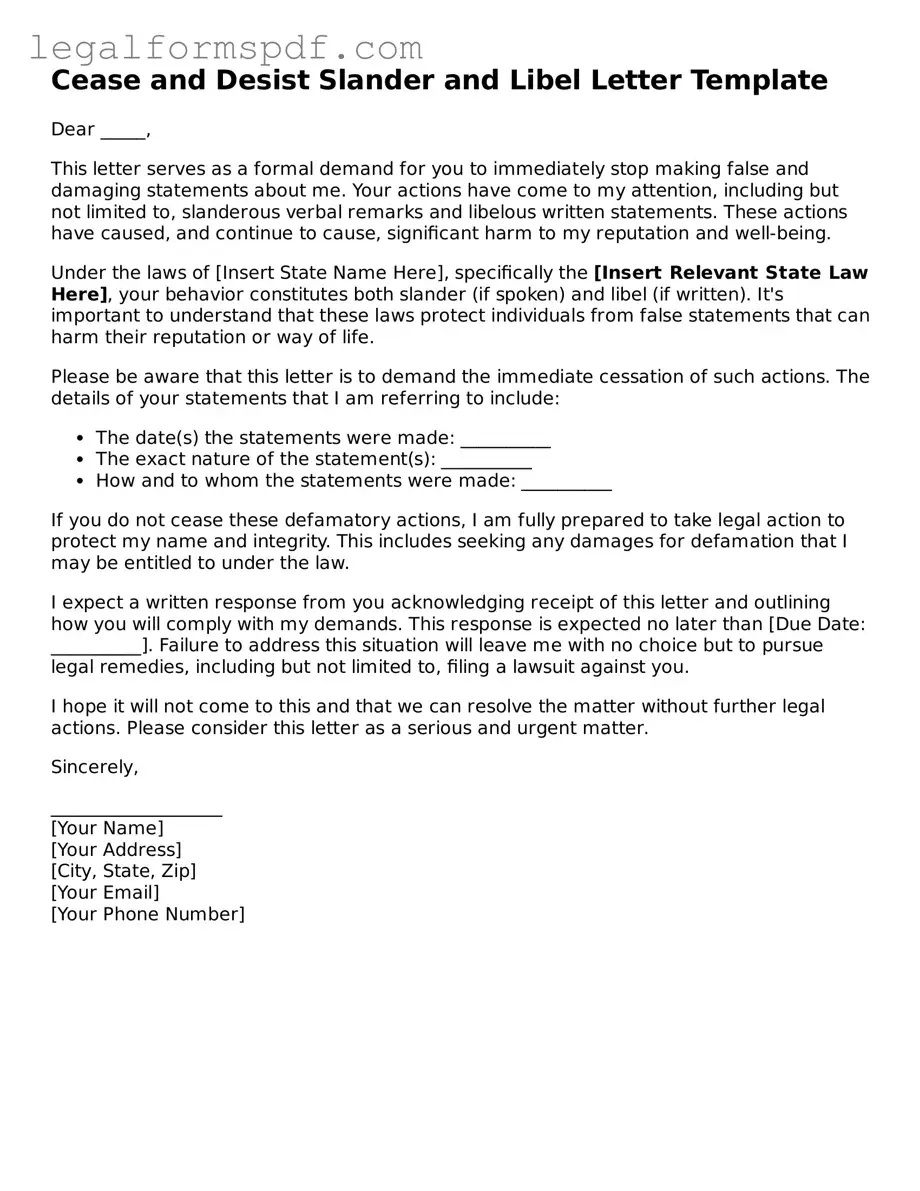What is a Cease and Desist Slander and Libel Letter?
A Cease and Desist Slander and Libel Letter is a document sent to an individual or entity asking them to stop (cease and desist) making statements that are false and damaging to someone's reputation (slander if spoken, libel if written).
When should I use a Cease and Desist Slander and Libel Letter?
Use this letter if you believe someone is making false and harmful statements about you or your business, and you want them to stop. It is a first step before potentially taking legal action.
What information do I need to include in the letter?
The letter should include your name, the name of the person making the statements, specific examples of the slander or libel, why these statements are false, and a demand for the individual to stop making these statements immediately.
Do I need a lawyer to send a Cease and Desist Slander and Libel Letter?
While you don't necessarily need a lawyer to send this letter, consulting with one can ensure the letter is properly drafted and help you understand your legal standing and next steps if the letter is ignored.
What happens if the person continues to make slanderous or libelous statements after receiving the letter?
If the behavior continues, you may need to consider filing a lawsuit for defamation. A lawyer can guide you through this process, evaluating the strength of your case and representing you in court if necessary.
Is there a deadline for sending a Cease and Desist Slander and Libel Letter?
There's no legal deadline for sending such a letter, but it's best to send it as soon as you become aware of the slanderous or libelous statements to prevent further harm to your reputation.
Can sending this letter backfire in any way?
In some cases, sending a cease and desist letter can escalate tensions or prompt a counteraction from the other party. It's important to weigh this potential outcome against the harm being done to your reputation.
What tone should the letter have?
The letter should be formal and clearly state your demands without being aggressive. It should convey the seriousness of the matter and your readiness to take further legal action if necessary.
Can this letter be sent via email or does it need to be mailed?
While you can send the letter via email for speed, sending it through certified mail provides proof that the letter was received, which can be important if you decide to take legal action later.
